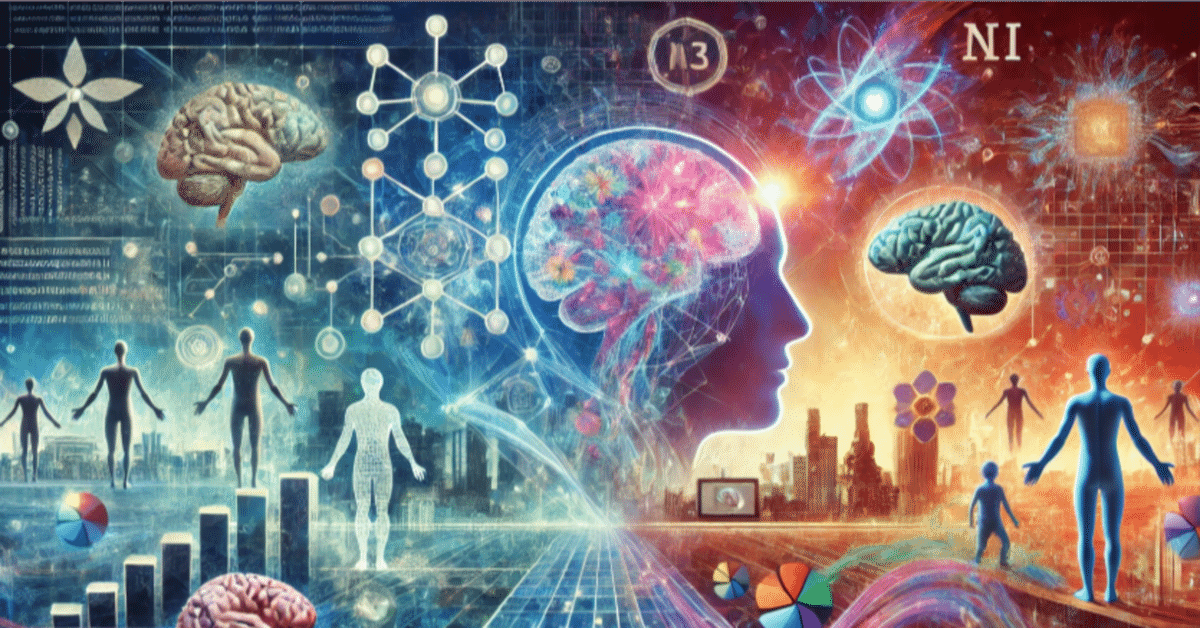
A New Light in the Web3 Era:MI Theory, Neurodiversity, and the Empowerment of People with Physical Disabilities
Introduction: Unlocking New Possibilities with Technology
A woman, once burdened by the limitations of her physical condition, found herself unable to live confidently or independently. Confined to bed and reliant on others for daily assistance, her life took a transformative turn when she began operating a delivery robot remotely. This innovation allowed her to work and earn an income.
She shared, "I no longer feel like a burden. I can now live with pride."
Shouldn't we strive to extend these possibilities further? By leveraging technology to bridge the gaps in diversity, we can envision a future where everyone, including individuals with physical disabilities, has the chance to unlock their potential.
Insights from MI Theory
What is MI Theory?
MI Theory (Multiple Intelligences) suggests that human intelligence is not a single, uniform ability but a collection of distinct types of intelligences. Proposed by Harvard University professor Howard Gardner, the theory identifies several forms of intelligence, such as:
Linguistic Intelligence (ability to articulate thoughts and ideas)
Logical-Mathematical Intelligence (ability to reason and work with numbers)
Bodily-Kinesthetic Intelligence (ability to use one's body effectively)
Musical Intelligence (ability to perceive and create music)
Everyone possesses unique strengths in these areas.
Connecting MI Theory with Delivery Robots
Remote operation of delivery robots exemplifies the practical application of abilities like "technical manipulation" and "interpersonal skills" (important for customer interactions). This woman discovered a new way to leverage her abilities, embodying the essence of MI Theory: recognizing and empowering the unique talents everyone possesses.
Exploring Neurodiversity
What is Neurodiversity?
Neurodiversity emphasizes respecting and valuing the diversity of human brains and cognitive functions.
Conditions such as autism or ADHD are seen not as "disorders" but as natural variations in the human experience.
This perspective encourages creating environments where individuals can thrive by embracing their unique traits.
Expanding Neurodiversity to Physical Disabilities
While neurodiversity primarily focuses on cognitive traits, its principles can be extended to physical disabilities. The idea is not to label but to adapt and recognize individual strengths.
The delivery robot story illustrates how a tailored approach can help individuals overcome physical limitations and make meaningful contributions to society.
The Role of Technology in Building an Inclusive Society
How Web3 and AI Contribute
Web3 and AI technologies provide the tools to integrate MI Theory and neurodiversity into society effectively.
Web3 Opportunities:
DAOs (Decentralized Autonomous Organizations) enable work beyond physical constraints.
NFTs and Digital Art offer creative outlets for those with physical disabilities, opening new economic opportunities.
AI Support:
Remote robot operation for new job roles.
Personalized education programs tailored to individual abilities.
AI tools such as voice recognition and virtual assistants support independence.
Bridging the Gap
Web3 and AI serve as a "bridge" between the ideals of MI Theory, the principles of neurodiversity, and practical societal implementation. With these tools, everyone can identify and maximize their strengths, creating a society where everyone can live with dignity.
A Vision for the Future: Harnessing Diversity Together
Concrete Proposals
Education:
Promote personalized learning based on MI Theory.
Introduce neurodiversity-focused curricula in schools.
Workplace Inclusion:
Utilize Web3 to create flexible work models that embrace diversity.
Develop workplace environments where individuals can thrive based on their unique traits.
Public Policy:
Strengthen disability support using technology.
Ensure fair evaluations and rewards through decentralized systems.
A Call to Action
"With technology, we can illuminate areas that have long been in the shadows. Let us embrace diversity, use technology effectively, and build a society where everyone can live with pride."
Conclusion: The Future Built on Diversity
MI Theory and neurodiversity offer frameworks to identify individual strengths and celebrate human diversity. Web3 and AI, as tools of innovation, unlock opportunities for inclusion, equity, and empowerment.
By uniting technology and these principles, we can create a brighter, more inclusive future for all.
#Web3 #AI #多様性 #ニューロダイバーシティ #MI理論 #障害者支援 #InclusiveTechnology #Diversity #Neurodiversity #MultipleIntelligences #Accessibility #デジタル包摂 #技術と多様性 #身体障害者 #未来の働き方 #Web3Technology #AIforGood #InclusiveSociety #デジタル経済 #NFT #DAO
